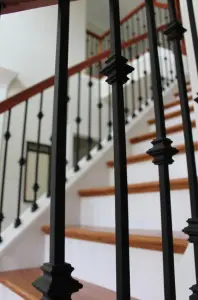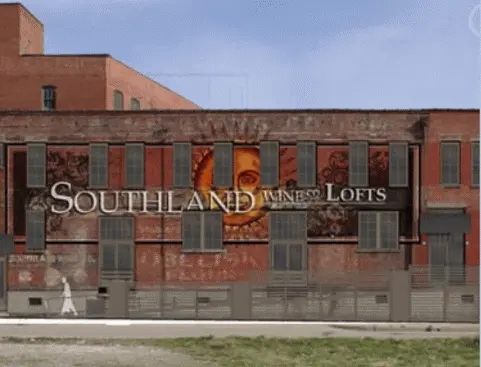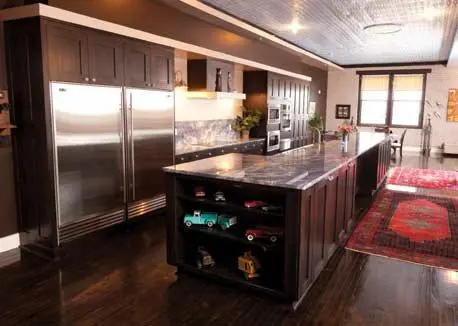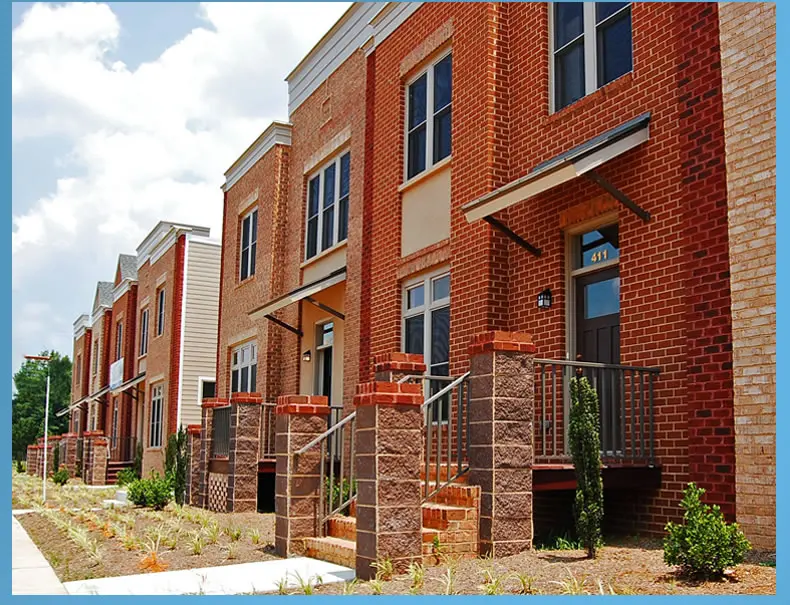In this video I discuss the prices and local tax rates you should expect to find for typical suburban housing (e.g., 4-bedroom, 2.5-bath, 2 car garage) in the Richmond Virginia area including the surrounding counties.
What The New Home Market Looks Like

I was that guy on Sunday.
While killing time with one of my daughters (who I secretly hope will be an architect, so I am grooming her), I couldn’t help but to stop in several new subdivisions and check out some of the 2011 Parade of Homes entrants. I didn’t get to go out during the official 2011 Parade of Homes weekends so I decided this past weekend was the time. What I saw was very encouraging.
There has been a lot of change in the industry and I am finding that the changes were as I had hoped…builders have begun to build a nicer, but smarter, home. I saw ‘GREEN’ elements in almost all of them. Every single builder had incorporated some element of responsible design, from fully Earth Craft certified to simply doing a MUCH better job of blowing in insulation. I saw smaller footprints and finer finishes and in many cases, a noticeable LACK of pretentiousness.
It was refreshing.
I saw a much higher level of design diversity within the neighborhoods, too. The shapes and sizes and fronts and materials were all QUITE different from house to house. It appears (at least for the time being) that the days of the subdivision where you got to choose from either white, off white or beige vinyl on the exterior are gone. I saw brick, Hardiplank, stone and cedar. I saw Craftsman, Colonial, Tudor and Contemporary influences on the exterior. I saw designs that were narrow and deeper to create a better sense of space between houses.
I also saw a lot of SOLD signs and that is something that was really good to see.
The Cold Storage Project
Answer: “About 700 apartments.”
Question: What is happening at the corner of 17th and E Broad?

The Richmond Cold Storage complex is a series of warehouses that produced ice (thus the name) as well as a few other warehouses and vacant lots that have been either converted to apartments (via Historic Tax Credits) or have become “ground-up” urban infill. When all said and done, the apartment count in within a 2 block radius of the corner will be somewhere between 700 and 800. When you include the project being developed on the entire block at Main and 21st, the count comes closer to 1,000.
That is substantial development in a relatively small area in a very compressed time frame and the good news is that they are leasing well for prices that can only be described at as pleasing to the developers that built them.
This new node of development in the northern end of “The Bottom” is an excellent trend for an area that has always struggled to sustain commercial/retail momentum. By targeting the “all inclusive” model at the Medical crowd and within walking distance to the Medical complex, the apartments seem to be creating their own momentum. The apartments are shifting population trends into eastern sections of the City and adding living options that did not exist in the area prior to just few years ago.
Cold Storage, Cedar Broad, Southland Wine Company and Raven’s Place are all part of the overall development area that will impact the City for decades to come.
The Case for Tax Abatement

The tax abatement program that was put into place in the City of Richmond in the 1990’s has been another lesson in incentivized urban renewal that has, for the most part, worked quite well.
What is Abatement?
The abatement program effectively says that improvements made to qualified properties are not taxed for a period of time — usually anywhere from 10-15 years — depending on the property type and use as well as when the property renovation was completed and put into the program.
While there are other facets to the program that govern how the abatement is actually computed, it is best understood as a program that reduces the taxable value of a property by the value of the improvements made. In other words, the net effect is that the City continues to tax the property as if it has not been improved. This credit is attached to the property, and not the individual who completed the improvement, so that if a property is sold prior to the expiration of the abatement, the remaining abatement passes to the new owner.
How Does it Work?
As an example, if a property was worth $400,000 prior to being improved and worth $800,000 after the renovation or addition, the City would issue an abatement credit of $400,000 making the net taxable real estate amount $400,000. In other words, you are paying tax on $400,000 worth of real estate when the value is $800,000.
That is pretty powerful.
Why Abatement?
The overall goal is to create a situation where someone is not ‘dis-incentivized’ to improve their property.
By creating lower costs of ownership for residents from a real estate perspective, vacant buildings become filled and blighted property becomes renovated. The additional revenues generated by having living and breathing occupants in the city means sales and meal taxes and higher values of real estate in the aggregate.
This abatement program is basically a down payment on investment in the city. In the long run, it will pay off handsomely.
Abatement + Tax Credits = INVESTMENT
The Abatement program also works hand in hand with the Historic Tax Credit Programs to increase the likelihood that abandoned structures are renovated.
One criticism of the abatement program is that it is only applicable to existing structures and not vacant land. Between HTC’s and Abatement, the overall cost of new construction compared to heavily incentivized renovation of old structures is arguably prohibitive.
Summary
The tax abatement program periodically comes under attack by the City Council members that fail to realize its impact or by the public who feels it is another way developers line their pockets. What they fail to realize is that these programs have been some of the primary drivers of redevelopment in the City and once a property’s abatement finishes, the City reaps the benefit.
I hope this program stays alive for a long time.
Buying for the Student – The VCU Housing Options

The Best VCU Housing Option – Buying a ‘Dorm’
I would like to offer the following debate to the parents of VCU students and their Medical School counterparts who are coming to Richmond this summer (or who have already arrived) and who need to make a decision about VCU Housing…
You should buy a house or condo.
Now I understand that my position on this is not without bias. I am a Realtor who sells a lot of property in and around both the VCU Campus and the MCV/VCU Health Systems Campus. It benefits me when you buy. It does not really benefit me when you rent. I am now done disclaiming my conflict of interest.
That being said, it does not mean that I am wrong about what is the most prudent decision regarding VCU housing options.
I am not going to give you the rent vs. buy calculator argument because we (Realtors) can all tweak the numbers until we can get it to show what we want it to. Depending on inflation, appreciation and tax effects, I can get one of those things to spew out some amazing numbers. Those are interesting tools and they have their place. This is not a debate for the rent vs. buy calculator.
My argument is more macro in nature and relates to the following set of circumstances:
- Prices are down 20-30% depending on your market and asset type
- Interest rates are being held down (somewhat artificially) by the Fed and are still hovering around 5%.
- College tuition and college room and board is going up despite the rest of the economic world moving the other direction.
Renting a property for roughly $1.30 per SF per month (which translates to about $1,200-1,400/mo for the typical 2-bedroom apartment in City of Richmond in or around the VCU campus) or buying a property for about $190-210 per square foot yields about the same monthly cash payment at the end of the day.
Which one gives you some upside? It is pretty obvious that buying has the promise of upside.
I know that the counter argument is simply that many are not sure that the pricing declines behind us.
The facts are as follows:
- On January 1 2009 there were over 400 condos for sale in Richmond, VA
- On January 1 2010 there were less than 200 condos for sale in Richmond, VA
- On January 1 2011 there were still roughly 200 condos on the market in Richmond, VA.
- No new projects have come to the market since the adjustment in 2008.
- Inventory in 2013 has been somewhat constant hovering around 100-130 units on the market at any one time
Life, at least financial life is about managing/pricing/understanding risk. Betting large sums of money on risky endeavors with no upside is not smart. Betting medium sums of money with a low cost-of-capital in a market that has balanced itself with no competition coming on line sounds like a pretty decent bet to me.
Don’t let the national media scare you off. While extremism and negativity sells, I have yet to see report on the college-driven housing market on 60 Minutes. As a matter of a fact, the student housing market is one of the healthiest housing sectors in the market and owning a home that is underpinned by a rental option to students is a way to remove a great deal of risk from the equation.
If really do have a VCU housing decision in your future, lets discuss the options.





